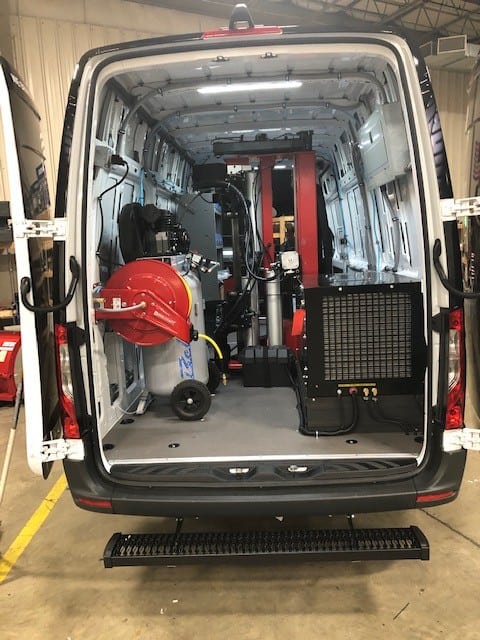Effective Flat Tire Repair Las Vegas - Mobile Help
Effective Flat Tire Repair Las Vegas - Mobile Help
Blog Article
Tire Service: Proven Approaches for Ideal Tire Maintenance and Treatment
From ensuring appropriate tire stress to routine turning and placement, there are tested approaches that can significantly extend the life expectancy of your tires and improve overall driving experience. Allow's dive into the globe of tire service and uncover the keys to maintaining your tires in top-notch shape for the long haul - Mobile Tire Replacement Las Vegas.
Importance of Tire Stress
Correct tire stress is an essential factor in guaranteeing ideal car performance and safety when traveling. Keeping the advised tire stress levels provided by the manufacturer offers numerous benefits. Firstly, appropriate tire stress advertises much better gas efficiency, as under-inflated tires can lead to increased rolling resistance, triggering the engine to work harder and eat even more fuel. Secondly, proper tire stress ensures also walk wear, improving tire durability and saving money in the long run by delaying the need for premature replacements. Additionally, properly pumped up tires contribute to improved handling and braking capabilities, critical for safe driving in various roadway conditions. Over-inflated tires, on the various other hand, can result in decreased grip and a harsher adventure. On the other hand, under-inflated tires are prone to getting too hot, which can lead to accidents and blowouts. Regularly readjusting and inspecting tire stress, particularly previously lengthy journeys, is an easy yet effective method to boost car efficiency, extend tire life expectancy, and prioritize safety and security when driving.
Tire Turning Guidelines
When taking into consideration tire turning standards, it is vital to recognize the significance of this maintenance task in taking full advantage of tire life expectancy and keeping optimal lorry efficiency. Tire rotation includes altering the placement of each tire on a vehicle to ensure even step wear. Front tires often tend to put on extra promptly than back tires because of guiding pressures, making routine rotation important for well balanced wear patterns. The recommended rotation pattern differs depending on whether a car is front-wheel, rear-wheel, all-wheel, or 4x4. Generally, tires must be revolved every 5,000 to 7,500 miles, or as encouraged in the car guidebook. Disregarding tire rotation can cause unequal wear, affecting handling, traction, and potentially compromising lorry safety and security. By adhering to proper turning standards, vehicle drivers can prolong the life of their tires, improve gas effectiveness, and enhance overall driving experience. Normal rotation is a basic yet efficient maintenance method that contributes dramatically to tire long life and vehicle efficiency.

Benefits of Wheel Positioning
Making certain correct wheel placement after tire turning is critical for preserving well balanced wear patterns and making best use of lorry performance. Additionally, right wheel alignment assists to expand the life expectancy of your you can find out more tires. Misaligned wheels can trigger irregular tire wear, leading to early tire substitute and raised upkeep costs.

Tire Tread Depth Check
Doing a regular evaluation of tire walk deepness is essential for preserving helpful site risk-free driving conditions and extending the life-span of your tires. The tread on your tires plays a crucial role in offering grip, specifically in damp or unsafe problems. To check your tire walk depth, you can make use of a tread deepness gauge or the dime examination. The advised tread depth is at least 2/32 of an inch. It is time to change your tires to make certain optimum efficiency and safety and security on the road if the walk deepness is listed below this threshold. Unequal step wear can indicate problems with tire alignment, suspension, or stress, highlighting the relevance of routine tread depth checks. Neglecting to monitor and preserve proper walk depth can cause lowered grasp, longer stopping distances, and a boosted risk of hydroplaning. By incorporating tire step deepness checks into your routine upkeep routine, you can drive with confidence understanding that your tires remain in leading condition.
Seasonal Tire Examination
Seasonal tire examination is a basic facet of tire upkeep that makes sure tires are all set to deal with the difficulties posed by various climate problems. In preparation for winter months, it is crucial to inspect the tire stress consistently as cold temperatures can trigger tire stress to drop. By carrying out regular seasonal tire assessments, chauffeurs can prolong tire life-span, enhance gas effectiveness, and most importantly, ensure a safe and secure driving experience in varying climate conditions.
Final Thought
To conclude, preserving appropriate tire stress, turning tires regularly, aligning wheels correctly, keeping an eye on walk deepness, and carrying out seasonal inspections are crucial methods for optimum tire care. By complying with these proven methods, vehicle drivers can ensure their tires last much longer, carry out much better, and add to general vehicle safety and security. It is very important to focus on tire upkeep to stop mishaps, boost fuel performance, and prolong the life expectancy of tires.
Sufficient tire stress advertises much better gas performance, as under-inflated tires can lead to raised rolling resistance, triggering the engine to function harder and eat more fuel.When taking into consideration tire turning guidelines, it is crucial to comprehend the importance of this maintenance task in maximizing tire life expectancy and keeping optimum vehicle performance. Seasonal tire assessment is a basic facet of tire upkeep that makes certain tires are ready to encounter the challenges positioned by different weather condition conditions. By carrying out regular seasonal tire inspections, motorists can prolong tire lifespan, enhance gas performance, and most importantly, useful reference guarantee a secure driving experience in varying climate conditions.
In verdict, preserving appropriate tire stress, turning tires on a regular basis, straightening wheels appropriately, checking step depth, and conducting seasonal inspections are important practices for optimal tire care.
Report this page